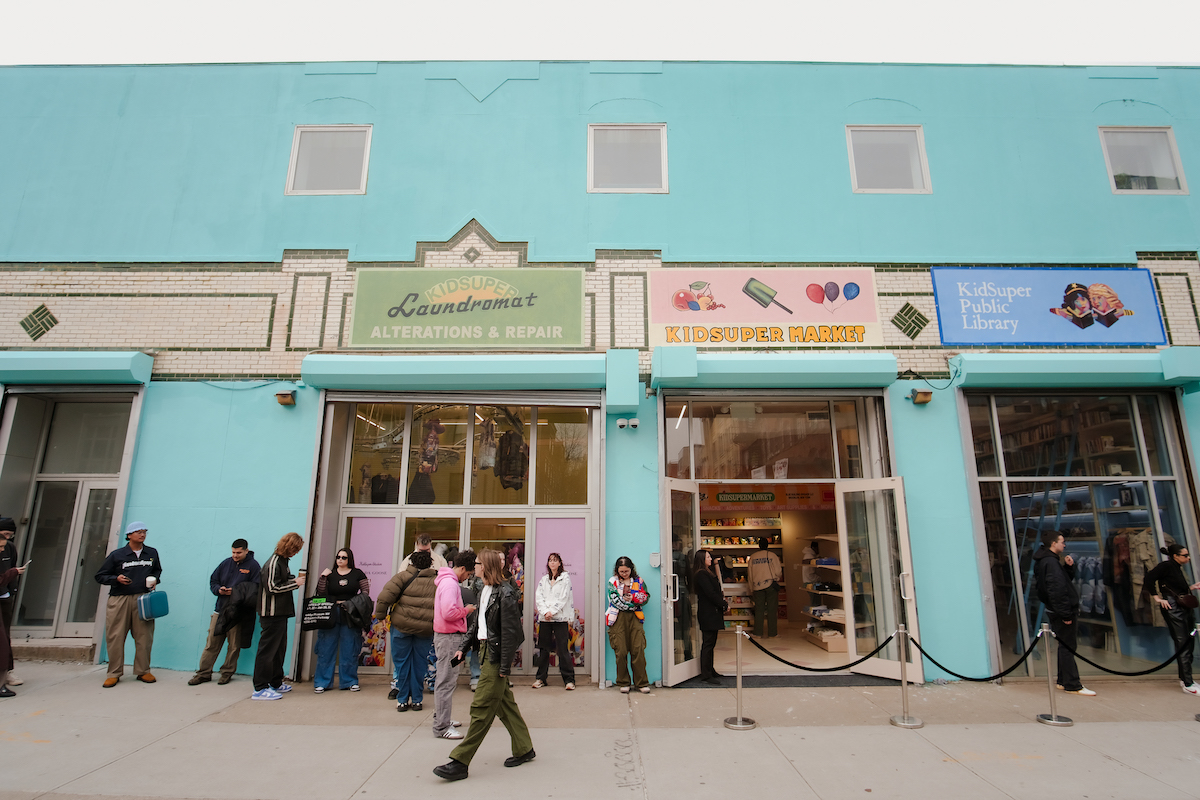Diana Al-Hadid has the gift of seeing things spatially. As a sculptor, she rarely uses material as it is intended. She stretches it as far as she can, pushing its limits, inventing a new method of layering or taking away. Her work is often monumental—haunting, large-scale structures that appear like an archeological relic or the physical embodiment of a memory of a place from the past. Her panels and sculptures seem to be at once decaying and dissolving, but also grown from meticulous drips and pours. Within it all are allusions to myth, folklore, architecture, science, or religion across cultures. Whatever the reference, the central focus is always material.
This year, her work is on view at the San Jose Museum of Art in the show “Liquid City” (through September 24). When we met her at her Brooklyn studio, her eponymous show at the Mills College Art Museum was just about to open and she was preparing for her next solo show at Marianne Boesky Gallery, set to open this fall. A public commission, which she couldn’t share details about yet, loomed in the distance, planned for 2018. Al-Hadid spoke with us about the difficulty of starting something, the real life skill-building that comes from her studio practice, and her comfort in taking up space with her work.
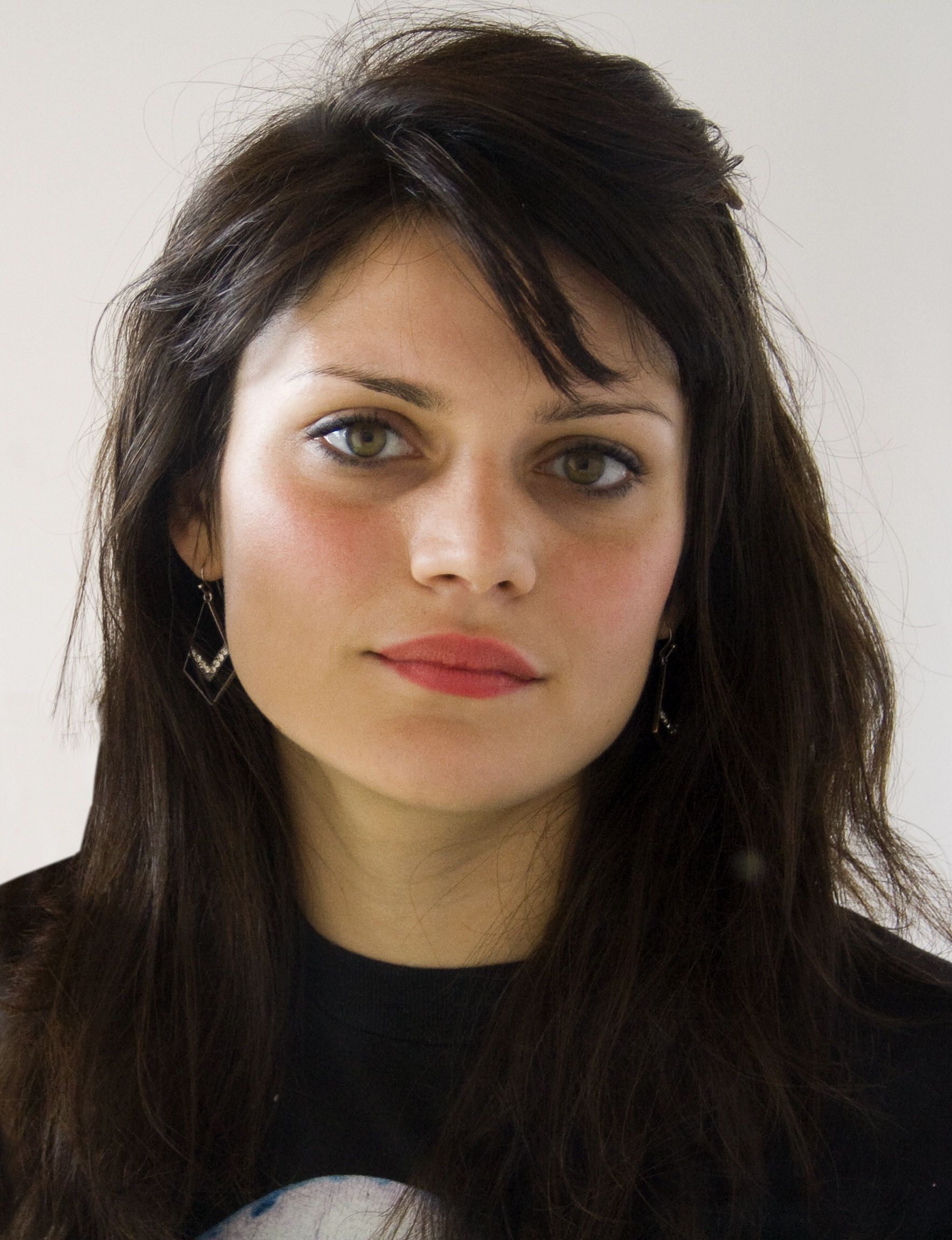
Portrait courtesy of the aritst
WHITEWALL: Your work sometimes references art history or mythology. Having exhibited internationally in places like the UAE, Japan, and Europe, are those references read differently in each place?
DIANA AL-HADID: The process is what’s really important to me. It helps a lot when people have some sense of the process. You don’t have to be like a sculptor, you don’t have to be like a gearhead—
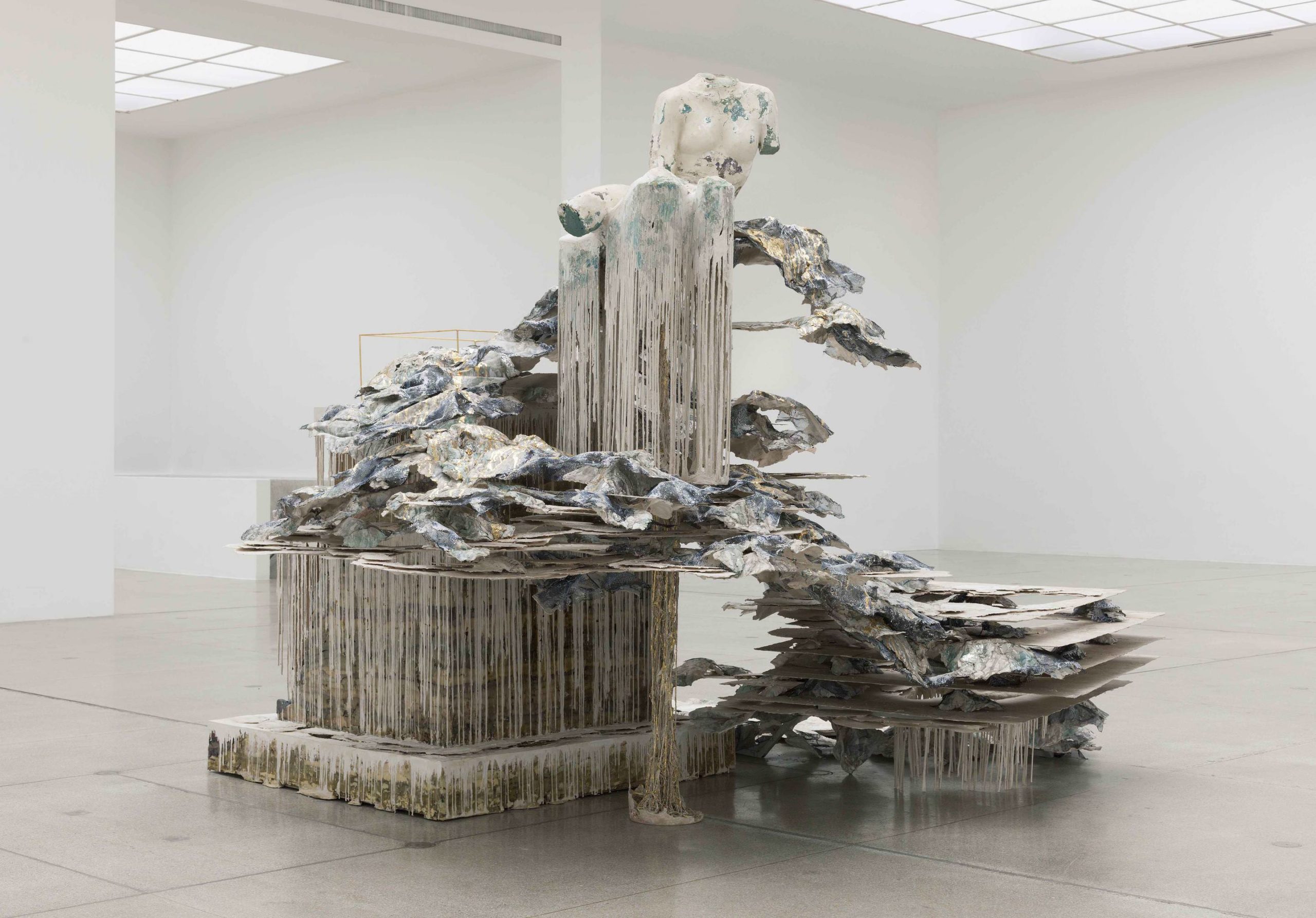
Diana Al-Hadid
Phantom Limb
2014
Photo by Markus Woergoetter
Courtesy of the artist and Marianne Boesky Gallery
WW: And know the super-technical stuff.
DAH: Yeah, but I think to have a sense for the process is important. I feel like the more someone knows about the process, the more likely they are to read greater depths into the work. Even if you don’t know that much about sculpture, I think you can still sense that the work develops from a concentrated examination of the materials and the process.
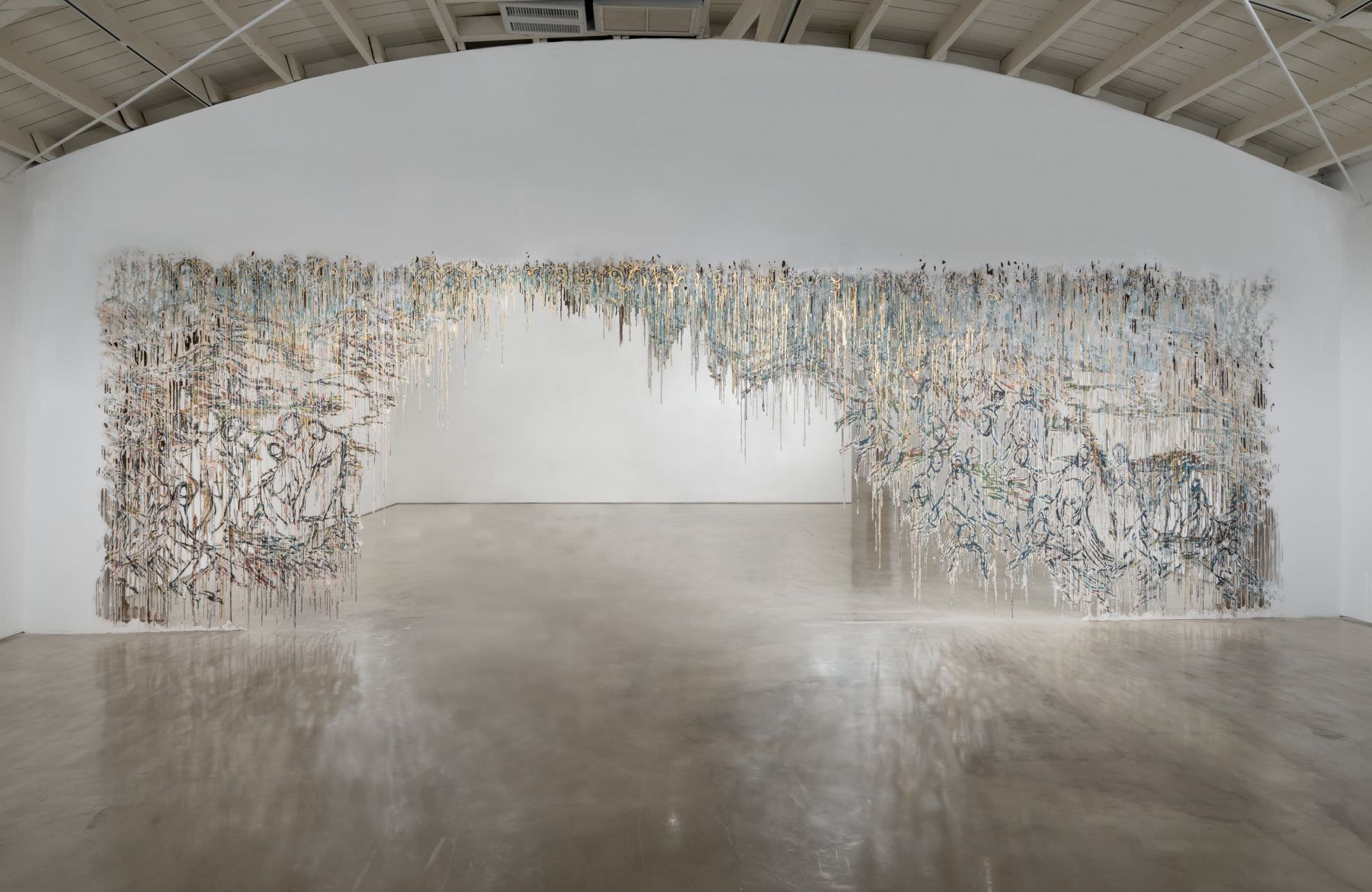
Diana Al-Hadid
Smoke Screen
2015
Photo Credit Joshua White
Courtesy of the artist and Marianne Boesky Gallery
WW: So it doesn’t really matter if you get the mythological reference or the religious reference, in order to understand the work?
DAH: Yeah, because for me, I’ve come to, but I didn’t originally have a knowledge of biblical references. I don’t start there. My focus is more on the process and the materials.
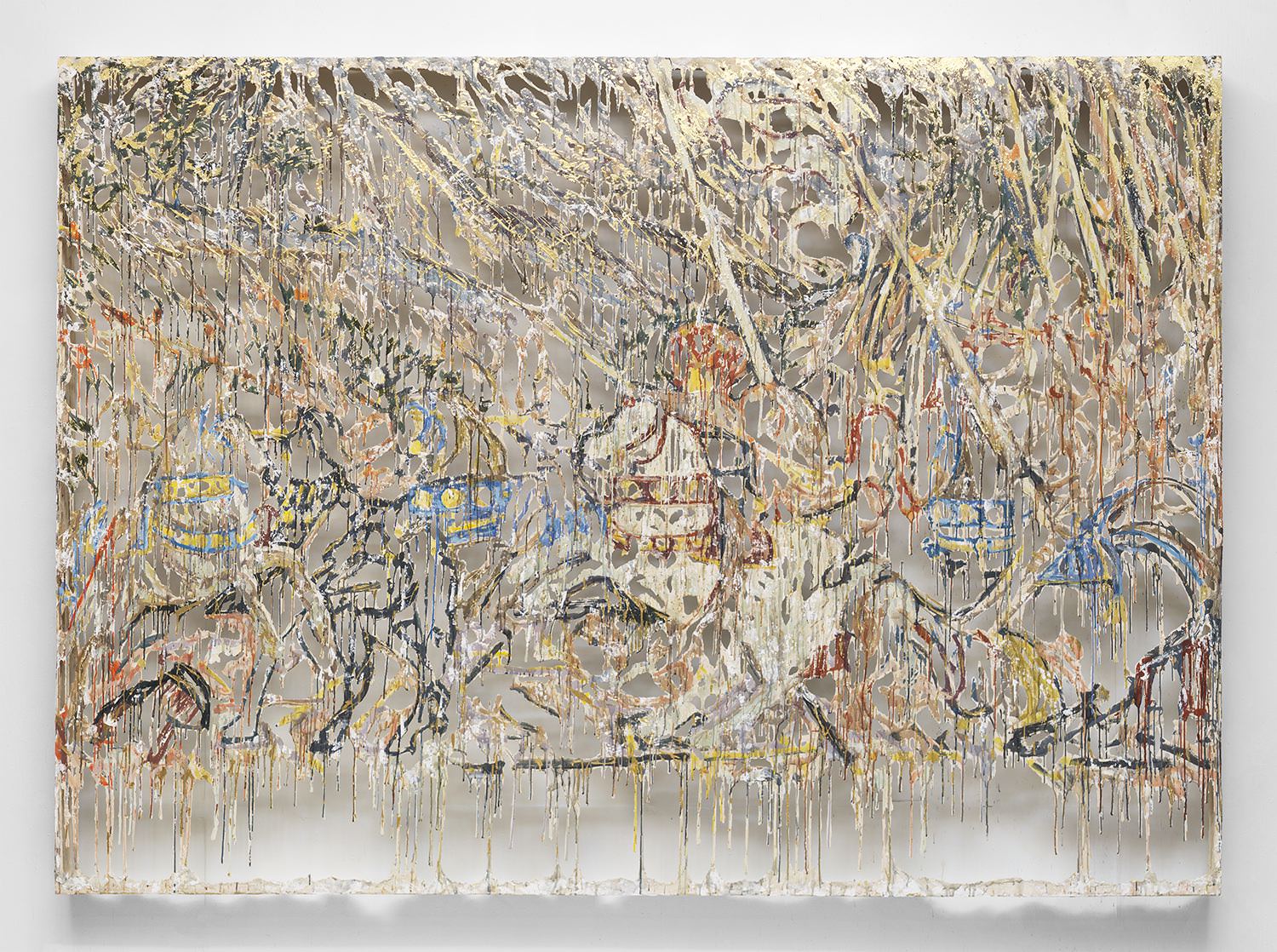
Diana Al-Hadid
Attack
2016
Photo by Matthew Grubb
Courtesy of the artist and Marianne Boesky Gallery
WW: And you’re actively trying to find new ways of using material, it seems.
DAH: That’s how I think of each new body of work, usually by addressing a problem that wasn’t fully resolved in a previous work. I wonder what the experience is for someone who has no idea how something is made, versus someone who has a little bit of idea, versus someone who has a lot of idea. I wonder what there level of appreciation is, or if it matters. I’m able to read those things very quickly. When I look at art, it helps me realize the innovation or the intelligence in a work. It’s hard to look at work without knowing something about the form and the process and the material, how the form came to be through the materials and through the making. But my work is driven by that.
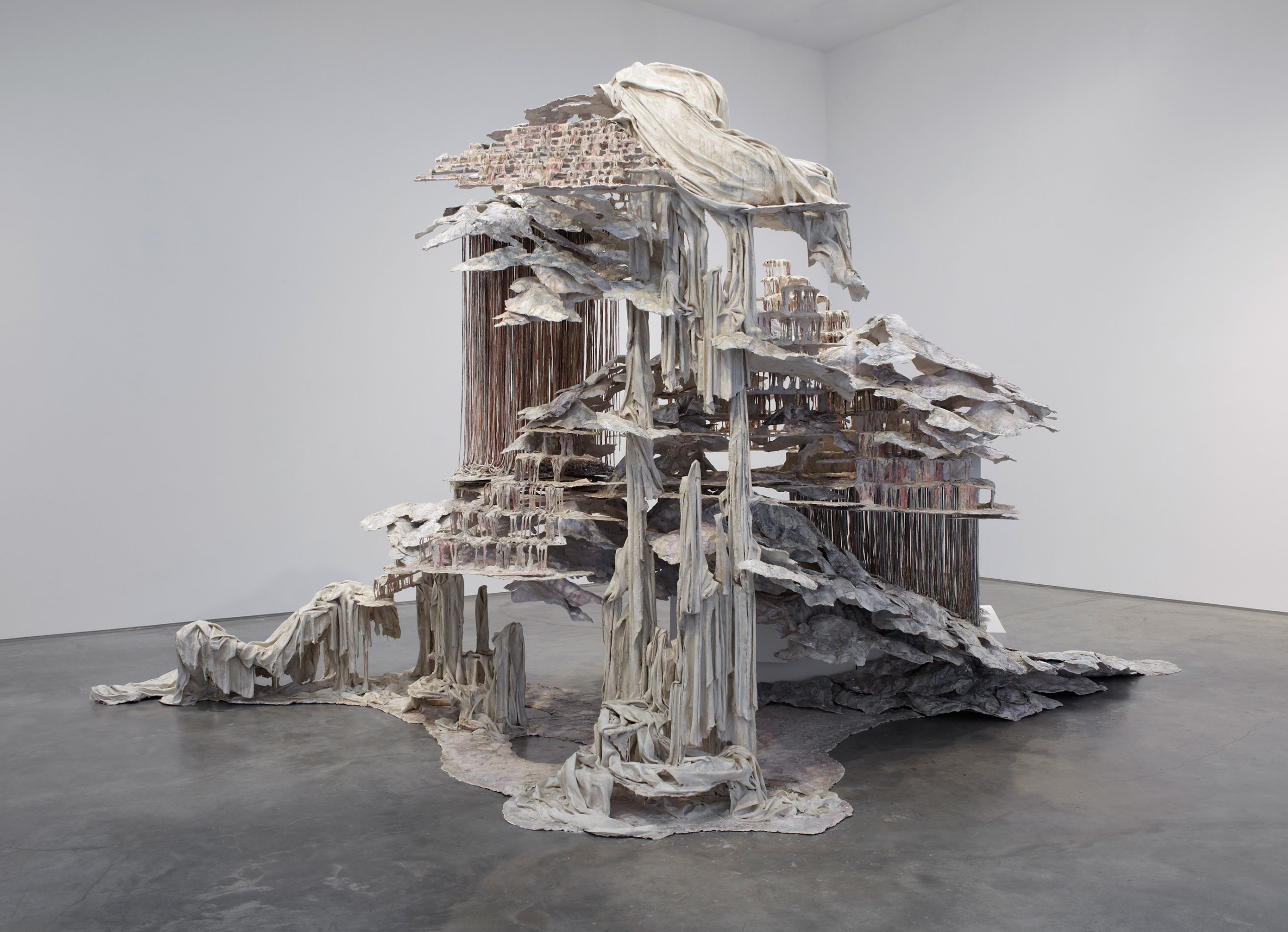
Diana Al-Hadid
Trace of a Fictional Third
2011
Photo by Jason Wyche
Courtesy of the artist and Marianne Boesky
WW: Is that what originally attracted you to making sculpture?
DAH: I think spatially. I imagine how something can sit in space and it’s usually not quite how it ends up looking, but I sort of fantasize about that. So I’m walking around a thing in my head, I spin it, rotate it around, see it up and down. But I’m also, in a more tactile approach, thinking about how the materials can sit in space and what they can do different than what I’ve maybe done before. Or what they can do that’s not how they’re supposed to behave out of the can. I do use things as they’re intended to a degree, but I like to tweak things a little bit. I think that’s a common impulse for sculptors, and architects, people who are driven by materials.
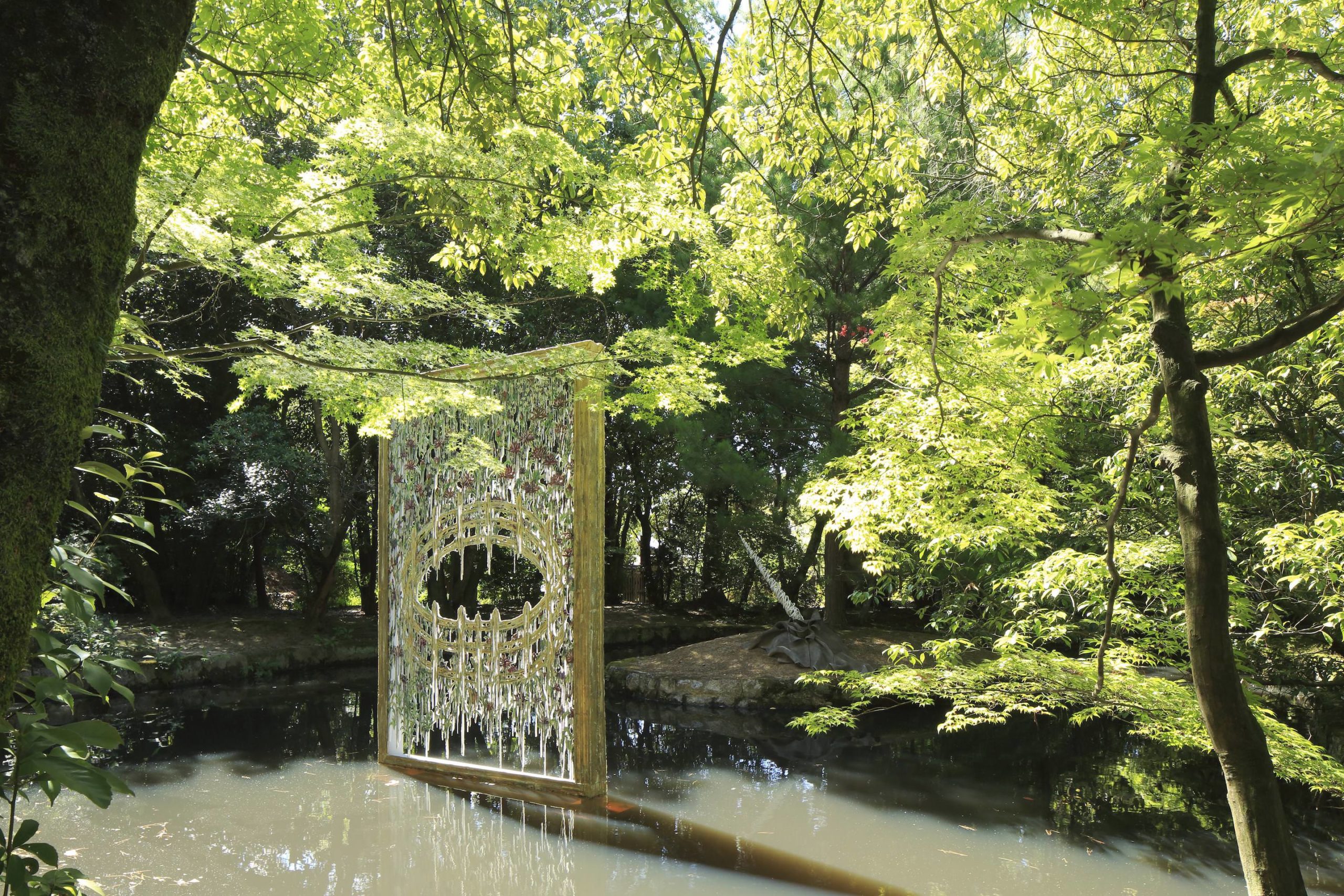
Diana Al-Hadid
The Unicorn Escapes
2016
Photo by Keizo Kioku
Courtesy of Culture City of Easy Asia 2016
Material is everything. It changes the meaning; it changes the experience of everything. Drinking from a glass cup is so different from drinking from a paper cup.
It’s very easy for me to imagine what that experience will feel like, and I think I’m usually pretty close. Though there is some magic to a real thing in real space that you can’t ever totally anticipate. I’m a firm believer in that.
WW: Are you often just working from that vision in your head, or do you put it to paper in a drawing or sketch usually?
DAH: There’s a little bit of sketching. I’m in this phase now, where I’m starting to sketch out some kind of loose parameters for the new body of work. A lot of drawings come out as I’m working on them to help determine dimensions or technical drawings with math.
But I wonder if some of that is to feel like it’s under way. A lot of it is just tricking myself into thinking something is happening, that something is moving in my brain. Just doing a little bit of plotting and it feels like you’ve started in it.
It’s really hard to start, I think. I wrote an essay for my Dartmouth show [“Diana Al-Hadid: Artist-in-Residence,” September 20–November 13, 2016]. I wrote about the difficulty of starting something and how, in some ways, you have to trick yourself. That first mark, that first move, is so pregnant with possibilities and it’s very intimidating. I think it’s important to, a little bit, rush through it. Like just plow through it so you already feel like you’re in deep and that first decision, that first mark on the page, is ancient history and has less weight. Maybe as a writer, you feel something similar.
WW: Sure, having a first perfect sentence is never going to happen.
DAH: It’s never going to happen, right? Kind of eventually you work your way back and tweak that first mark.
WW: Is it easy for you to erase something, the way you work?
DAH: Oh, it’s so easy to erase! It’s so easy for me to completely annihilate. That’s something that I really value. I’m really able to fix anything. Nothing is that delicate. I’m very aggressive with the way things are built, and very hands-on. If I break something, I know how to fix it. Sometimes I break it intentionally. It’s of course more daunting than hitting the delete button on the computer, but I do it all the time. I’m constantly breaking things.
WW: That’s an interesting paradox in your work. It can look quite delicate, but it’s actually very sturdy.
DAH: It’s very muscular. Along the way I am both very aggressive and I have moments where I’m very fussy and kind of tender, focused on the small. Sometimes I’m very careful and timid and sometimes I’m very aggravated. All of my temperaments are represented in the work. They all kind of come out. Some days I’ll get impatient with myself and I’ll tear up the page or start over, break the part off that I’m not happy with. And sometimes I have to zoom in really close and finesse something. That’s what I live for. It’s really interesting to figure out what draws your attention and what’s a problem.
I think it’s helpful, too, in figuring out in your broader life, what’s an important thing to focus on. It’s like skill building, knowing what problems are worth your energy. My work also can take me to places that are not healthy. I’m just letting out some anxiety that may just be suffocating the work. So it’s really important to tune into that.
WW: So the work isn’t biographical in its narrative or the subject, but it is in the making of it?
DAH: One hundred percent. Almost everything you can learn about an artist, their particular anxieties or curiosities, you can learn a lot about how they are responding to the world by how the work is being made. It’s so important to look at how it’s put together and how it’s made, what it’s made out of, is it made fast or slow, what’s missing from the work, or what’s intentionally missing.
WW: When you see a finished work, can you remember parts of it that—
DAH: Oh, I remember a lot of emotional states. For sure.
WW: Earlier, when you said you think spatially, is that why you like working large-scale, almost architecturally?
DAH: It’s a complicated question. And it’s something I’ve been thinking about for the past few years. Because I’ve come to notice that so much of my work is so large. And a lot of it is an attraction to having my body be one element in the landscape of the sculpture, so that I’m kind of moving through the work and on top of it and in it and crawling around it; building something around me that’s bigger than me, that’s larger than my periphery. There is an attraction for me in working in that kind of space. I tend to think in those dimensions fluidly. I also tend to think in very small, minute detail fluidly. I have harder time in the middle range. I’m a little greedy about space.
But I’ve been thinking about this for a long time. I think that because my business is space, thinking about space and building in space, I found that I have no issue taking up space when it comes to my work. I’ve noticed that in so many other arenas, not just in my life, but in the lives of many women, it’s a hard thing to do—to take up space. Women in our world, in our culture, and most cultures, are asked to take up less space. I think that when you’re accustomed to shrinking and being asked to take up less physical space—lose weight, be small, speak quietly, speak less, take up less space on a train, take up less psychological space, give more space to others around you—in every sense women are asked to get smaller, to be smaller. It’s very familiar; every woman knows this intuitively. So when you’re asked to be small in so many different spheres of your life, in so many different ways of existing, you find an outlet. When you’re lucky enough to find a way or an environment or a safe area to be large, sometimes it can get explosive. So I’ve been fortunate in finding a way that feels comfortable for me, and I have no issue making large work. I don’t know why I got that lucky, because that is an outlet for me. But I suspect that it’s because of being asked to be smaller in other areas of my life growing up.
I think that that is part of why I have this urge to make these environments. It’s why I have this physical desire to see these spaces grow and why I need to be in them. I think that it’s a very complicated, but it’s important to me that I’ve been able to make large work and I’ve always wondered, looking back I wonder why that’s never been a problem. Why I’ve felt comfortable. It’s a comfortable space for me to be big.
WW: And you’ve always felt comfortable making larger work?
DAH: I’ve made large works since I was in undergrad, since I was 18, when I made my first installation. I never wanted to make an object on a table. When I first started, I wanted to take up the whole room and make something that wasn’t an object. I don’t come from money so it was all very cheap materials, and figuring out how to really take plaster, which comes in a bag, and stretch it so that you can fill a room with a couple bags of plaster. It was about how to stretch the material on a budget. How do you make what you want to make in your head with very little financial support?
I think now, because I have a nice gallery and I have assistants, it looks like these big works are coming from this super-funded enterprise. But as I grew, this was all out of pocket. I put everything back into the work. Even still, it’s all going to back into the studio. I always made these works from a different kind of appetite. I had a different kind of means. Even when it was just me and I didn’t have any help in the studio, they were still big. They were huge.
WW: Huge in relation to you working on, but they are also huge for the viewer. You’re sort of forced to interact with your work, to feel how your body feels in its presence.
DAH: And it’s hard to make people aware of their body and their presence. Sometimes forget about your body in space. Or you take it for granted. You’re used to looking at something.
WW: Versus in something.
DAH: And it’s so common to be looking at a screen that there is such a difference experience than 15 years ago.
WW: What made you start thinking about why you were drawn to making larger work?
DAH: I know I make big work, but I sometimes wonder, why is this kind of work so energizing to me? And so important to me? I always ask it of myself, but I think that it wasn’t until the past five years or so that I really realized what it means from a women’s perspective.
It’s hard because some women don’t have any outlet to be big and grow into a different size or let themselves be the size that they are or they want to be. And I think that I’m lucky that I have something where I can play out all my different ideas in comfort. That’s fortunate. But I think it is a result of being asked to be small so often. And it takes growing up to notice that. To notice how often that happens.
This article appears in Whitewall’s spring 2017 Women in the Arts issue.





